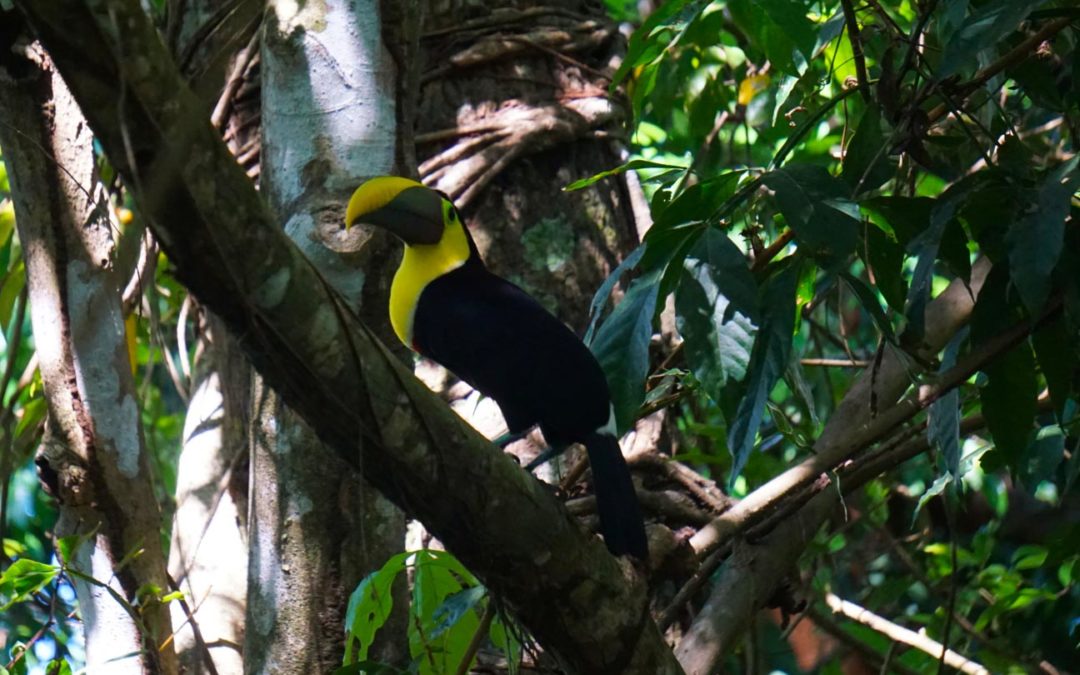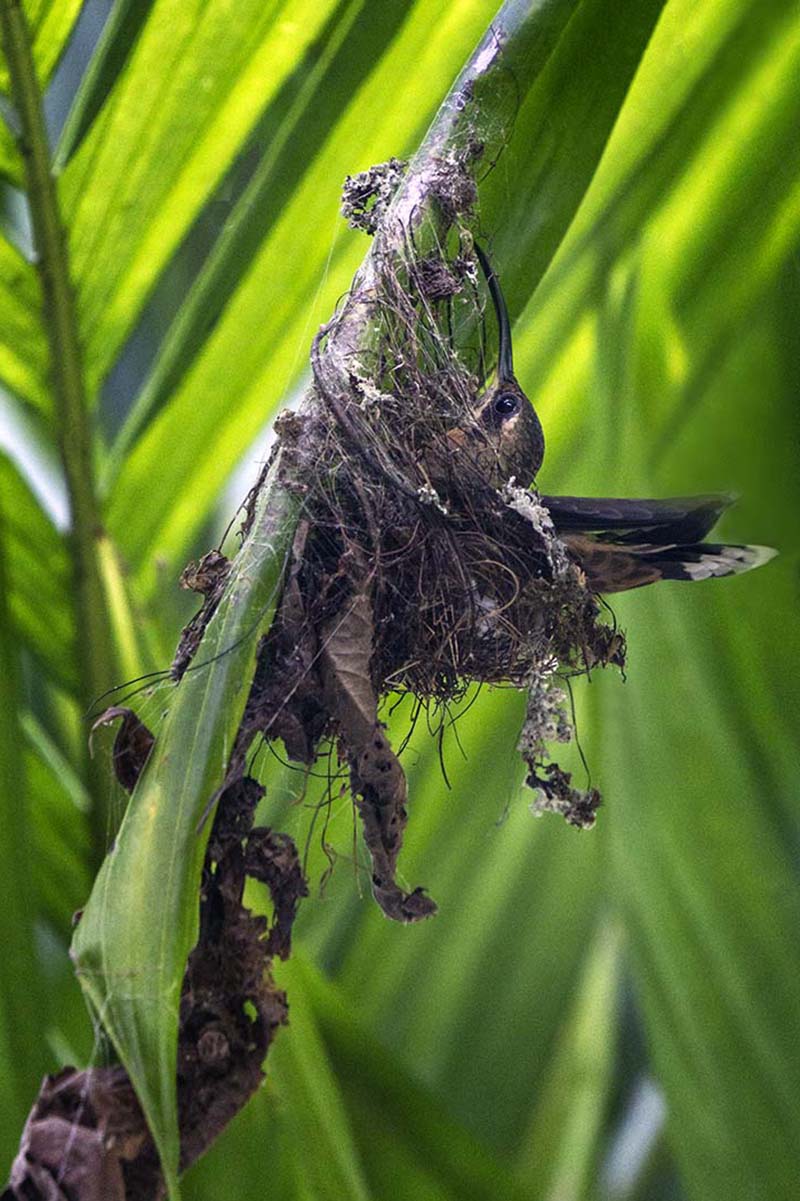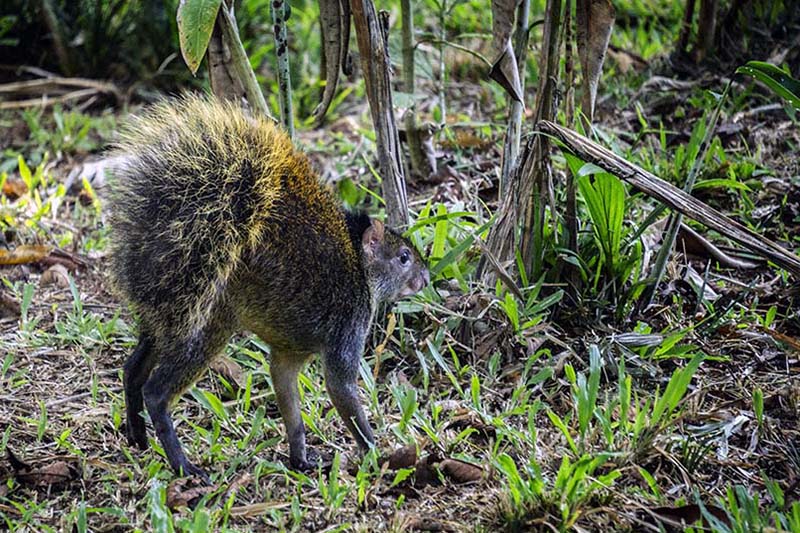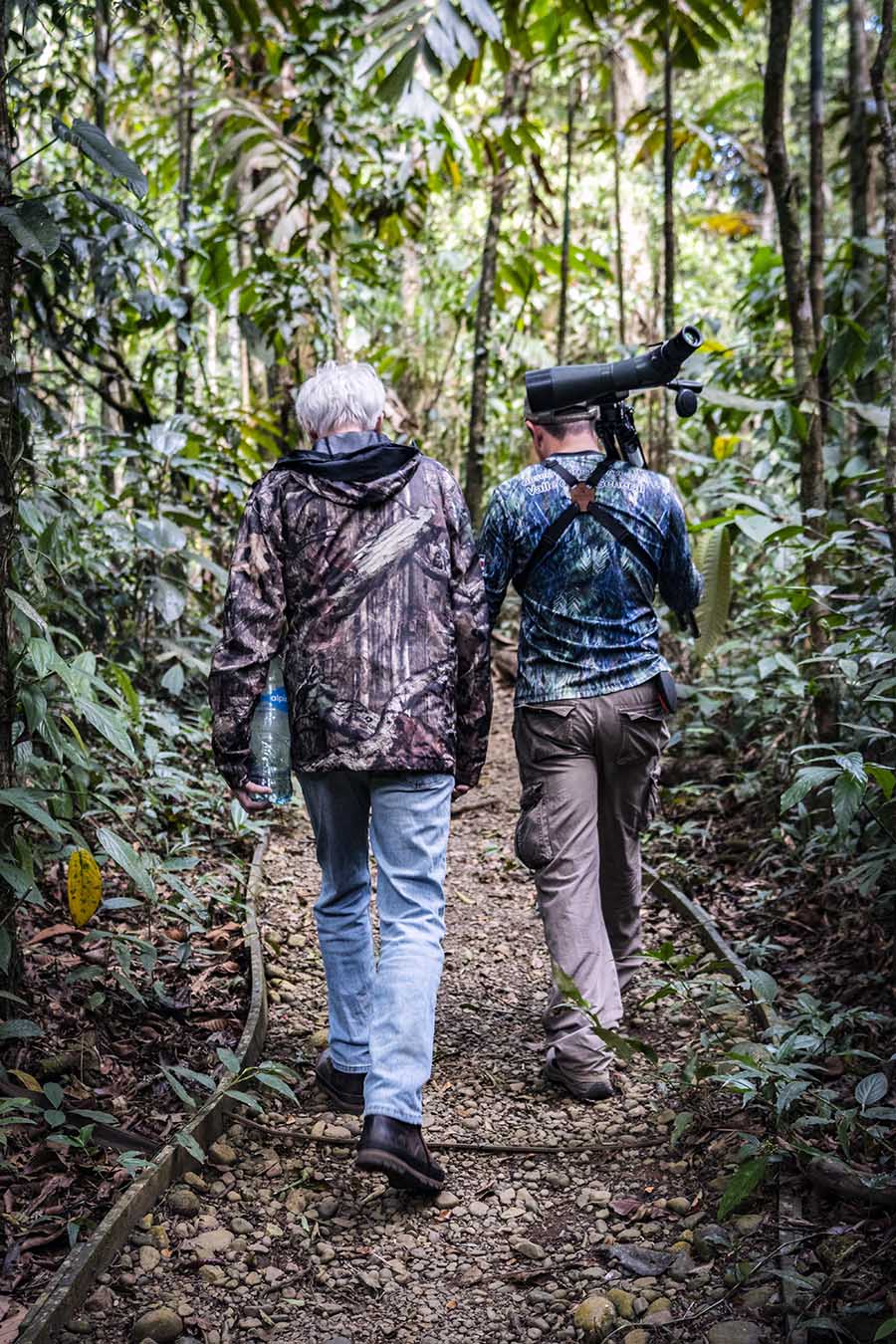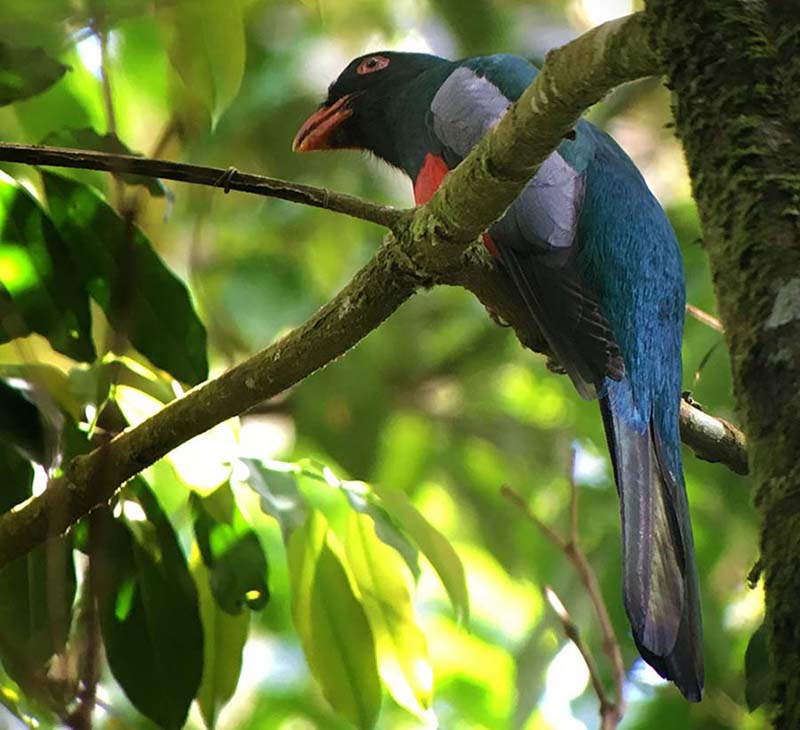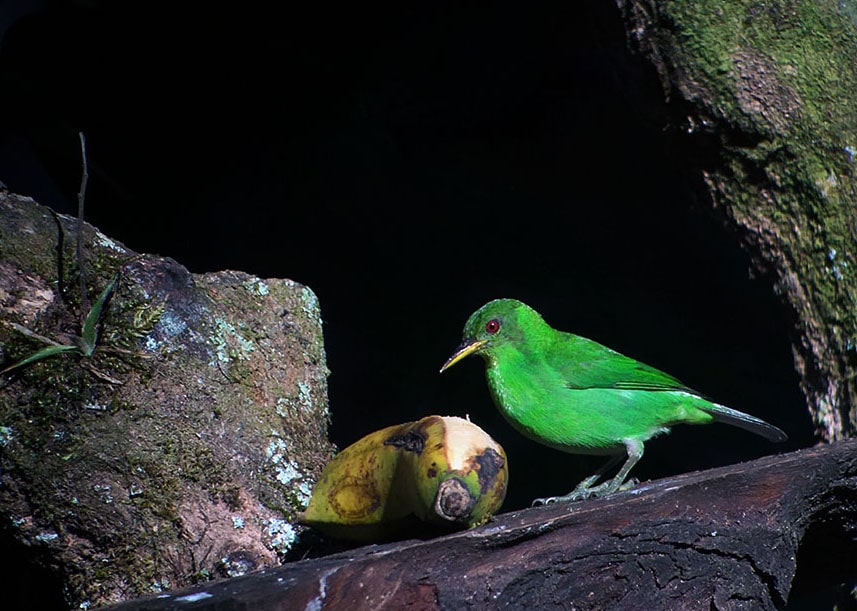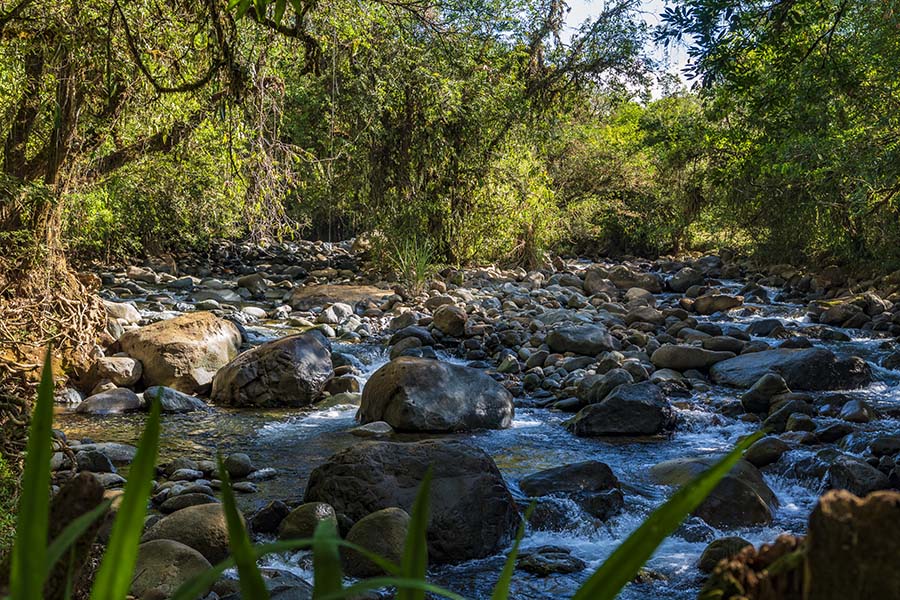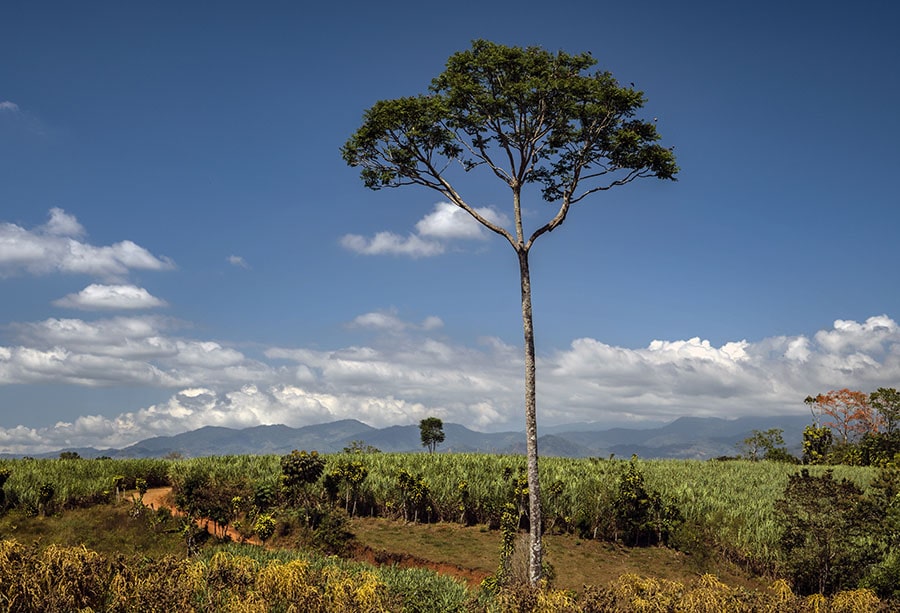One does not have to be a hard-core birder to enjoy bird-watching at Los Cusingos Neotropical Bird Sanctuary, just as
“One needs no scientific training to love a warbled song, or to warm to the sight of a parent bird bravely defending its helpless nestlings”
Skutch A.F. from Untitled, Journal, 1931
During a recent visit to Southern Costa Rica, we were looking into some unusual places for nature walks along Interamericana Highway (designated as Route 2 on the maps). We found Los Cusingos Bird Sanctuary to be such a place, with a long bird checklist (at the bottom of this post) and full of character.
The Bird Sanctuary covers 78 hectares, of which 50 ha. is primary forest and the remaining 28 ha. secondary growth. It has Dr. Skutch’s house-museum, a cabin and a small visitor center. The garden has a variety of marked native and exotic plants and trees. It also has a small nursery with flowering plants (including local orchids (some of them so tiny, that only high-quality macro photographs would make them full justice).
Why is Los Cusingos Worth a Visit?
The allure of the Los Cusingos is easy to understand once you know the story behind it. Even if you don’t, there are many reasons to spend a day or two at this place:
- Los Cusingos is the only sizable lowland premontane forest area with primary growth near San Isidro del General. The rest has been logged down without a trace.
- Over 300 bird species have been reported at Los Cusingos over the years
- Skillful and knowledgeable nature tour guide on site
- A bird feeding station is available for independent visitors on self-organized tours
- Los Cusingos is Alexander Skutch’s Home (now a museum and a resting place)
- Enjoy Pamela Lankester’s Garden with marked plants and trees and a small nursery on site
- See agouties, coatis, snakes and other wildlife in their natural habitat
- Well-preserved Indian petroglyphs dated back to Pre-Columbus time at the end of a trail
- Easy access from San Isidro del General (or, better yet, by staying locally in Quizarra)
- Easily walkable terrain and trails
Birds of Los Cusingos
According to the census conducted the Tropical Science Center (which oversees the sanctuary), the avifauna of Los Cusingos counts over 307 species, half of which were resident birds. The bird sanctuary covers altitudes between 650 and 750 meters above sea level. Across the Talamanca Mountain Range, the variety of avian species changes with altitude. Thus, Los Cusingos makes a perfect location for watching birds, which prefer lowland and mid-elevation habitats.
Our Local Guide at Los Cusingos
Our guide, a humble local guy J. Andres Chinchilla, was recommended to us by our Airbnb host in Quizarra. From the very beginning, he was responsive to our requests and generous with his time. You can contact cusingos@cct.or.cr to connect with Andres.
Being born and brought up locally, Andres worked for Alexander Skutch himself since he was 14. He actively participated in construction of the walk trails and other improvement projects at the Sanctuary. His dream is to supplement his tour-guiding job with building a few cabins locally and to expand his ecotourism-oriented business.
Early Morning Bird-watching Tour
We met at the gate bright and early, before the Sanctuary “gates” even opened (another advantage of staying locally and going with a local guide). Equipped with a high-quality Swarovski scope and intimate knowledge of Los Cusingos native and migratory birds, Andres spent almost 6 hours birdwatching with us. “Patience is a virtue of a lucky birder”, he remarked to us, while setting up his scope in the garden and taking out a couple of bananas out of his backpack.
If you do not have a tour guide, you can still use a bird feeding station by the garden to observe a variety of birds. Just remember to bring a few ripe bananas for this purpose. During our visit, Speckled Tanagers, Shining Honeycreepers and Green Honeycreepers, Spot-crowned Euphonias and Cherrie’s Tanagers were not shy at the feeder.
Along the edges of the garden, we also observed the famous Fairy-billed Aracari, Red-capped Woodpecker, several species of Hummingbirds and a Blue-capped Manakin gulping dark-blue fruits of melastomes in the air. That morning, we were also lucky to get a fleeting glimpse of the endangered Turquoise Cotinga.
After spending a couple of hours in the garden, we started walking by the Peñas Blancas river and along the River trail. At the entrance of the Naturalist trail, the forest got denser and more mysterious, dominated by tall mossy trees covered with epiphytes, climbing woody vines and walking palms on spiny “stilts”. On the go, Andres spotted several elusive resident birds and got them on the scope and “in the frame” for us. By the time we circled back to the garden, our bird list grew substantially longer and included Blue Dacnis, Riverside Wren, Baird’s Trogon and Orange-collared Manakin. If you have specific the bird species on your wish-list, let Andres know and he will make you bird checklist glow with new entries within a short time.
Alexander Skutch House-Museum
Having spent a few hours birding, we could now immerse ourselves into the history of Los Cusingos and the fascinating life story of its former owners Alexander Skutch and Pamela Lankester. The House (now a museum) was built by Alexander Skutch himself and has changed little since the time the homesteading naturalist settled down there.
Browsing through the simply appointed rooms, one can easily sense the Skutch’s appreciation of a humble lifestyle and “work environment”. The original old typewriter, which was used for decades to capture his notes, articles and book manuscripts was still resting on his desk. The sturdy self-built wooden bookcase was fully loaded with “well-used” ornithology guide books and Skutch’s own volumes authored during his 60 years-long ornithology career. The man, who objected to banding or handling birds, let alone collecting them, came up with creative ideas for learning about them by mere observation. Some of his “inventions” are on display in his study along with his old binoculars and cameras.
Coffee with a View
After the walk and an insightful conversation with two other birding enthusiasts (the only other visitors we met at the Sanctuary that Sunday morning), we asked Andres about any local cafe nearby in Quizarra. He immediately hopped into his car and told us to follow him.
The local bakery, just a few hundred meters away, had two tables and a magnificent view. The variety of freshly made pastries in this little place was just too wide for us to navigate through. At the end, we settled for a couple of Andres’s favorites, a cup of famous Costa Rica-grown coffee and sat down to enjoy the vista over Valle del General.
Birdwatching North of Los Cusingos Bird Sanctuary
The northern section of the Alexander Skutch Biological Corridor is located at higher altitudes of Las Nubes Biological Reserve. It is bordering the Chirripó National Park and reports a large variety of avifauna, including several of the 28 described restricted-range regional endemics of the Talamanca Mountain Range. Long-tailed Silky-flycatcher (Ptilogonys caudatus), Black-faced Solitaire (Myadestes melanops) and Sulphur-winged Parakeet (Pyrrhura hoffmanni) are just a few examples.
A recently published book “Birds of the Alexander Skutch Corridor, Costa Rica” is a great resource, if you are interested in learning more about the avifauna of the entire Alexander Skutch Biological Corridor. This field guide covers 285 bird species recorded by the Faculty of Environmental Studies of York University (Toronto, Canada). The long list of birds includes 47 migratory species, 41 altitudinal migrants, 23 endemic species, and 11 near threatened or vulnerable species.

